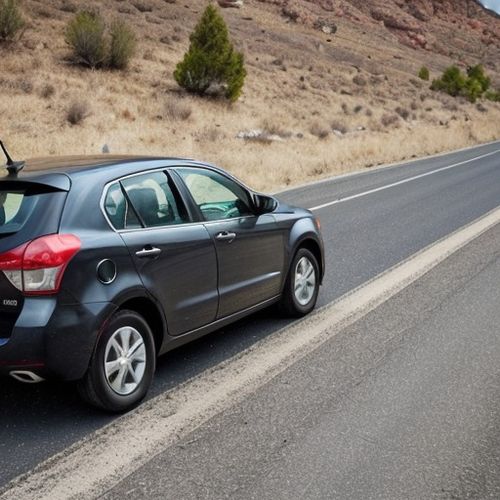Renting a car in the United States can be a convenient way to explore the country, but many travelers fall into the costly trap of purchasing unnecessary insurance at the rental counter. What most people don’t realize is that their credit cards often provide robust rental car insurance coverage—completely free of charge. By leveraging this perk, you could save upwards of $200 per week, money that’s better spent on experiences rather than redundant policies.
The Deceptive Upsell at the Rental Counter
Walk into any major car rental agency in the U.S., and you’ll be greeted with a hard sell on insurance. Agents are trained to push daily collision damage waivers (CDW) and liability coverage, often framing them as mandatory or heavily recommended. The pitch is convincing: “If anything happens to the car, you’ll be fully responsible.” What they don’t mention is that your credit card might already protect you from these exact risks.
The average CDW costs between $20 and $30 per day, which adds up quickly for longer rentals. Over a week, that’s $140 to $210—sometimes even more for luxury vehicles. Many renters, especially international visitors unfamiliar with U.S. practices, assume this is a non-negotiable part of the process. In reality, it’s one of the industry’s most profitable add-ons.
How Credit Card Coverage Works
Premium travel credit cards, such as those from Chase Sapphire, American Express, or Capital One, frequently include primary or secondary rental car insurance. Primary coverage means your card steps in before your personal auto insurance, while secondary coverage supplements your existing policy. Either way, this benefit can drastically reduce or eliminate your need for the rental company’s expensive offerings.
There are caveats, of course. Most credit card policies exclude certain vehicle types (e.g., trucks, exotics, or rentals exceeding 30 days) and may not cover liability for damage to other cars or property. However, for standard sedans and SUVs rented for typical vacation durations, the protection is often more than sufficient. The key is reading your card’s terms beforehand and calling the issuer if anything is unclear.
The Fine Print You Must Check
Not all credit cards offer equal protection. Some only cover collisions and theft, leaving you exposed to third-party liability claims. Others require you to decline the rental company’s CDW for coverage to apply—a detail easily missed in the rush of paperwork. Visa Infinite cards, for instance, typically provide solid primary insurance, while World Mastercards vary by issuer.
Another often-overlooked rule: You usually must pay for the entire rental with the eligible card and be the primary driver. Adding extra drivers or using a different payment method mid-rental could void the protection. Additionally, cards rarely cover “loss of use” fees that rental agencies charge for the time a damaged car spends in repairs. Still, these gaps are minor compared to the potential savings.
Real-World Savings and Pitfalls
Consider a family renting a minivan in Orlando for a week. At $27/day, the CDW would cost $189. If their Chase Sapphire Reserve covers the vehicle (which it does for most rentals under $75,000 MSRP), that’s nearly $200 back in their pocket. Multiply that across multiple rentals annually, and the savings become substantial.
However, there are situations where relying solely on credit card insurance is risky. If you lack personal auto insurance (common among urban dwellers), secondary coverage becomes irrelevant. Some states also have unique liability requirements that credit cards don’t address. In such cases, a supplemental non-owner liability policy from providers like Allstate or GEICO might be wiser than the rental company’s overpriced option.
Navigating the Checkout Process
When picking up your car, politely but firmly decline all insurance offerings. Agents might persist, using scare tactics like “Your credit card won’t cover X.” Stand your ground—they’re not insurance experts. Instead, carry a printed copy of your credit card’s benefits guide or have the confirmation email from your issuer handy. This documentation can resolve disputes if damage occurs later.
Before driving off, thoroughly photograph the vehicle’s condition. Credit card claims often require more paperwork than rental agency waivers, so evidence is crucial. Should an accident occur, immediately notify both the rental company and your credit card’s benefits administrator. Delays can complicate claims.
The Bottom Line
While rental car insurance seems like a minor expense, it’s where agencies make their highest margins. Savvy travelers who understand their credit card perks routinely save hundreds annually. The system banks on consumer ignorance—don’t fall for it. A 15-minute review of your card’s benefits could be worth $200 a week in your wallet, not theirs.
That said, never assume coverage exists. Verify terms annually (benefits change), and for high-risk trips—like winter mountain driving—consider short-term specialty insurance. For typical vacations though, your plastic’s hidden protection is likely all you need.

By Sophia Lewis/Apr 11, 2025

By Joshua Howard/Apr 11, 2025

By Grace Cox/Apr 11, 2025

By George Bailey/Apr 11, 2025

By Samuel Cooper/Apr 11, 2025

By Sophia Lewis/Apr 11, 2025

By Megan Clark/Apr 11, 2025

By Lily Simpson/Apr 11, 2025

By Samuel Cooper/Apr 11, 2025

By Noah Bell/Apr 11, 2025

By Ryan Martin/Apr 11, 2025

By John Smith/Apr 11, 2025

By James Moore/Apr 11, 2025

By Lily Simpson/Apr 11, 2025

By Thomas Roberts/Apr 11, 2025

By Jessica Lee/Apr 11, 2025

By William Miller/Apr 11, 2025

By Elizabeth Taylor/Apr 11, 2025

By Christopher Harris/Apr 11, 2025

By Eric Ward/Apr 11, 2025